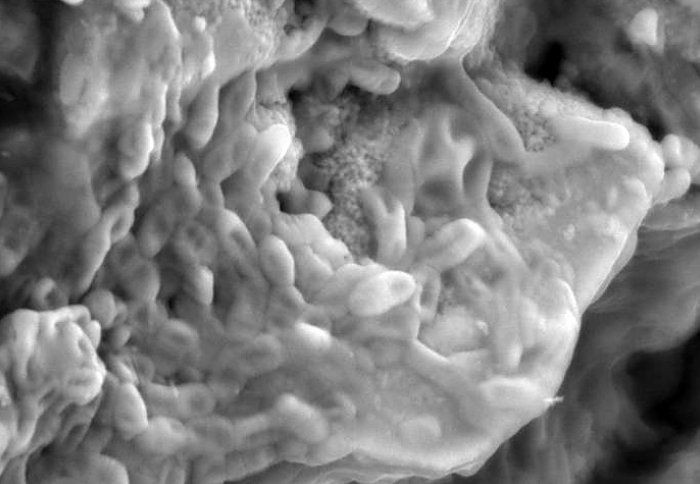Dinosaur Red Blood Cells May Have Been Found In Ancient Fossils

A team of scientists has detected what may have been red blood cells and collagen fibers in 75-million-year-old dinosaur fossils, a discovery that can help researchers better understand the biology of these ancient animals. Scientists had previously found soft tissue in dinosaur fossils, but this is the first time that remnants similar to blood cells have been identified in fragments of dinosaur fossils.
As part of the study, published in the journal Nature Communications on Tuesday, the scientists analyzed eight fossil fragments. While examining part of a fossilized dinosaur claw, they identified tiny structures with an inner, denser core. Although these structures looked like red blood cells further evidence would be needed to confirm their origin, the scientists said. If red blood cells are found in dinosaur fossils, it would help determine when dinosaurs turned warm-blooded.
“We still need to do more research to confirm what it is that we are imaging in these dinosaur bone fragments, but the ancient tissue structures we have analyzed have some similarities to red blood cells and collagen fibers,” Sergio Bertazzo, a junior research fellow from the department of materials at Imperial College London, and the study’s co-author, said, in a statement.
In one dinosaur fossil fragment, scientists also detected structures similar to the banding found in collagen fibers. The structure of collagen varies among different animal groups, helping scientists link related creatures. If verified, the identification of collagen-like structures in dinosaur fossils could provide strong evidence to show how different dinosaur groups were related to each other.
“Our study is helping us to see that preserved soft tissue may be more widespread in dinosaur fossils than we originally thought,” Susannah Maidment, a junior research fellow from the department of materials at Imperial College London, and the study’s lead author, said in the statement.
“What is particularly exciting about our study is that we have discovered structures reminiscent of blood cells and collagen fibers in scrappy, poorly preserved fossils. This suggests that this sort of soft tissue preservation might be widespread in fossils.”
© Copyright IBTimes 2025. All rights reserved.






















